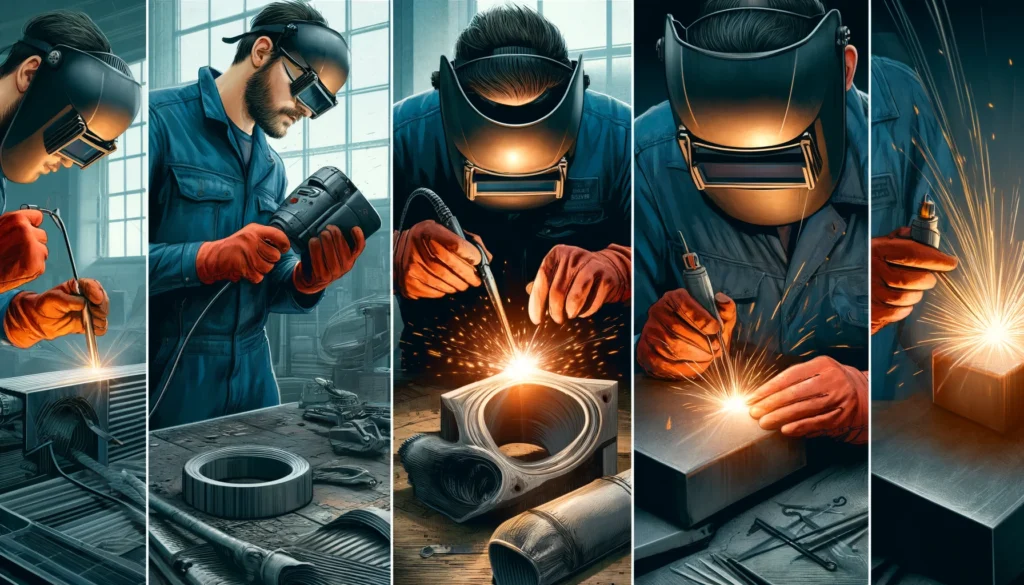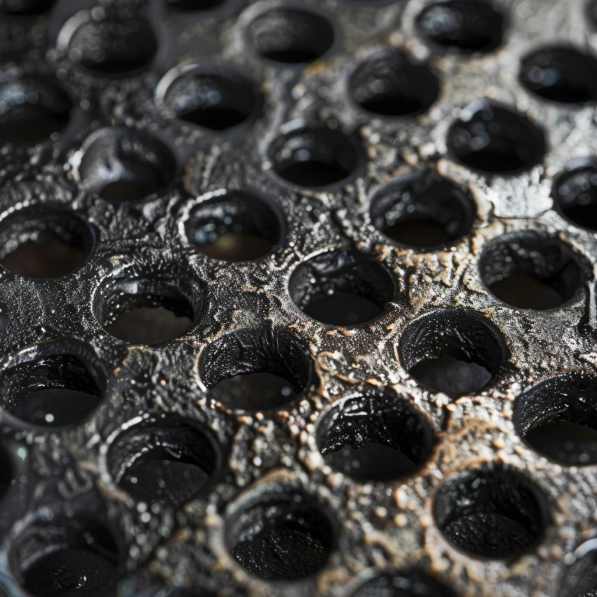
How To Weld Cast Iron?
Some people say that welding cast iron is reduced exponentially but actually, numbers recorded by some organizations tell us a different story. According to “Globenewswire” the use of cast iron in the cookware market reached US $3,303 million from US $2,537 million in 2017 which is a good jump.
In addition, Transparency Market Research believes that the global market of Iron & Steel Casting will surpass US $202 billion before 2026. All these statistics prove that cast iron is still in use around the world for different purposes, like cookware welding. Anyway, whatever is your reason for welding cast iron, you should know the precise answer to how to weld cast iron?

Following are some of the things to remember while welding cast iron:
Determining The Type Of Cast Iron
In the beginning, you may want to know what type of cast iron are you going to weld. There are various kinds, and you may not want to try welding most of them. Following is a list of types and their weldability:
Gray Iron: It is weldable but with difficulty.
White Iron: Almost Impossible to weld.
Ductile Iron: Weldable but very rare and extensive. It requires a lot of time to weld.
Malleable Iron: Never welded by anyone, as welding alternates the characteristics of the metal, making it useless.
Different Techniques To Weld Cast Iron

There are numerous answers on best way to weld cast iron. However, we are discussing the most used and popular techniques for welding cast iron. Gas welding, Arc/stick welding, MIG welding, and TIG welding are the four widely used methods to weld a cast iron. Following is a brief explanation of each.
Gas Welding
As compared to the Arc/Stick-based procedures to weld a cast iron, the gas weld is slower. The benefit of this method is that carbon migration in gas welding is generally not an issue. But still, it is crucial to use a protective gas welding rod in the procedure. The only issue with this method is that it needs a large amount of heat when welding large components.
Arc/Stick Welding
This method is preferred by many DIY welders. The arc/stick welding process is a very efficient answer of how to weld cast iron? There are tons of different electrodes available to simplify this method. Welding rods used in this process restrict the migration of carbon to heat-affected areas and the weld zone.
MIG Welding
Even though this process is used usually for this purpose, MIG welding is not a good option to choose for welding cast iron. The only good reason that you’d use this method for is when you want to apply the repeating application for which you can create a procedure.
TIG Welding
Just like MIG welding, the TIG welding process is not preferred by most of the welders to weld cast iron. The reason behind this is because TIG is an open-arc procedure. It means that minimizing carbon migration using this method is almost impossible. In addition, it can be a very expensive process as it only uses nickel wire.
Above were four most common answers to how to weld cast iron?. But there are some key steps in welding cast iron that you should remember regardless of your choice of technique.
The Key Steps In Welding Cast Iron
By following these cast iron welding procedure crucial steps in the same order as listed below, you will be capable to weld extremely durable cast iron.

Identify The Alloys
Cast irons are a branch of the iron-carbon alloy tree and they tend to have high carbon substance; this makes them hard compare to their alternatives. But this quality of being a reliable material comes at the price of ductility. Compared to wrought iron or stainless-steel, cast iron is way less flexible.
The metal enlarges and shrinks when it is heated and then cooled while welding. This results in tensile stress. That’s why it can be challenging to weld a cast iron because when they are heated or cooled down, they tend to crack rather than distorting or stretching.
We prefer following two options:
1. Gray Cast Iron
can u weld cast iron? The most used and welded cast iron alloy is grey cast iron. It is more weldable and way more ductile than the next option. During production, carbon content on the grey cast iron welding electrode evolves into graphite flakes and then into either a ferrite or pearlite crystalline microstructure. The only drawback of this cast iron alloy is the graphite flakes inside it. Because they can enter the weld pool and can cause embrittlement in the welded metal which can become a challenge for welders.
2. White Cast Iron
The second cast iron alloy you can use is known as white cast iron. Little bit different then the grey cast iron, this alloy of cast iron can hold the carbon content as iron carbide without rushing it out as graphite flakes. As a result, a stiff and hard cementite crystalline microstructure comes into play.
3. Clean The Casting
But whatever type of alloy you are using, all castings should be appropriately cleaned and prepared before starting welding. It is crucial to take out all the surface materials while preparing a casting for the welding. The casting should be properly cleaned from the area to be weld. Eliminate any kind of dirt, paint, oil, and other sticky materials from the weld area.
4. Pre-Heating
Every cast iron alloy becomes vulnerable to cracking, when stressed. But we can prevent cracks in cast iron by regulating the amount of heat while welding. The following three steps are crucial to prevent cracks:
- Pre-heating
- Low-heat input
- Slow cooling
Pre-heating can diminish the thermal gradient, the main reason for cracks in a cast iron alloy, between the heat-affected area and the casting metal. This reduces tensile stress due to welding.
An additional factor affecting the stress induced by the welding process is the cooling rate. Rapid cooling can lead to contraction, which further leads to weak and easily cracked welds.

5. Finishing
Once you’ve picked the most appropriate welding technique, and used it to weld the cast iron you need to weld, the final step would be finishing it. There is a way to diminish the probabilities of the weld cracking in finishing; this involves the use of compressive stress while cooling the weld to resist tensile stress.
A technique called peening is used by welders to weld beads that can form cracks, while the weld is still soft. Peening is done by the use of a ball-peen hammer to execute moderate strikes.
This technique can help lessen the risk of a crack forming in the heat-affected area and the weld zone. Last and most crucial step that a welder needs to carry out while welding cast iron is to control the cooling process.
This process involves slow cooling by means of insulating materials. This ensures a great finish and an efficient cast iron weld.
Congratulations! You now have known how to weld cast iron.





